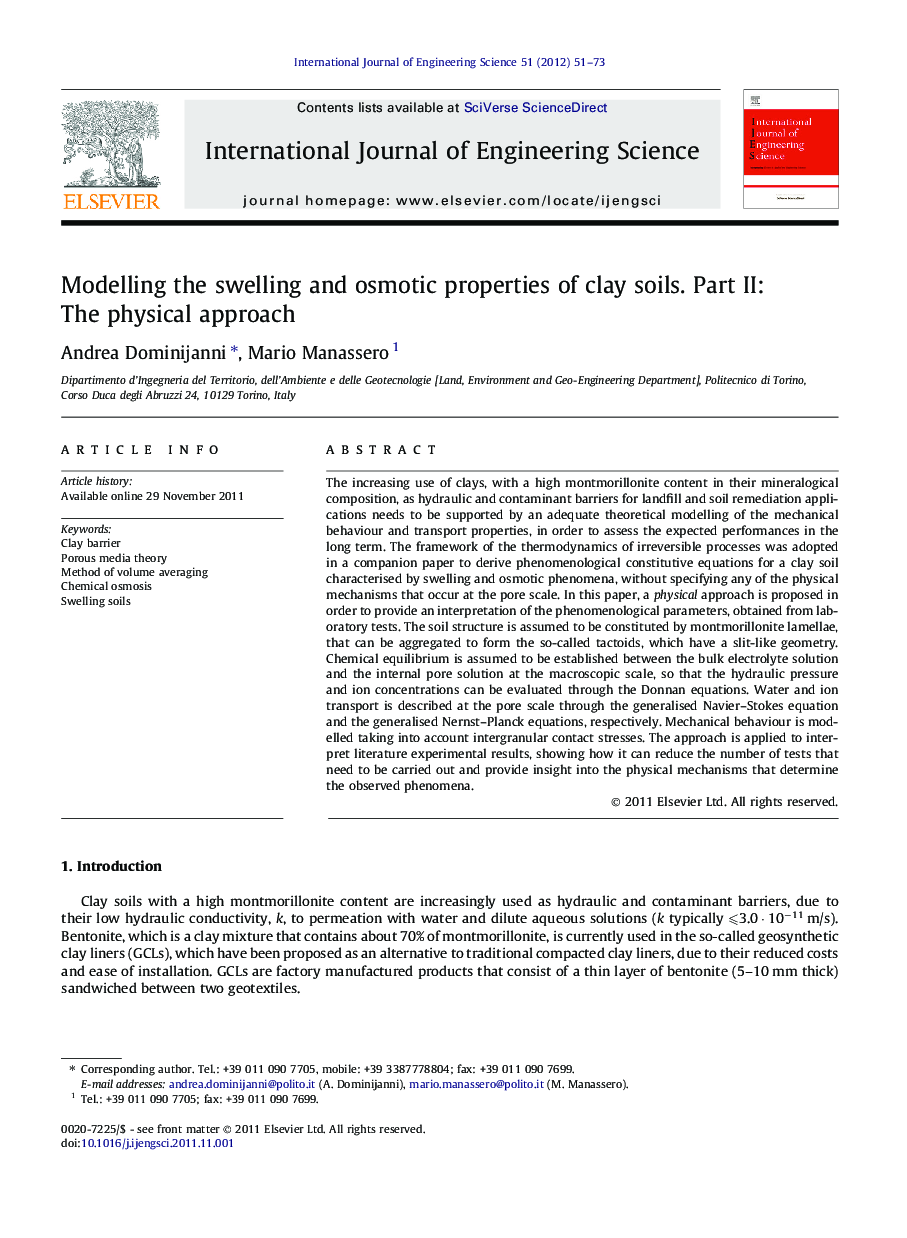| Article ID | Journal | Published Year | Pages | File Type |
|---|---|---|---|---|
| 825192 | International Journal of Engineering Science | 2012 | 23 Pages |
The increasing use of clays, with a high montmorillonite content in their mineralogical composition, as hydraulic and contaminant barriers for landfill and soil remediation applications needs to be supported by an adequate theoretical modelling of the mechanical behaviour and transport properties, in order to assess the expected performances in the long term. The framework of the thermodynamics of irreversible processes was adopted in a companion paper to derive phenomenological constitutive equations for a clay soil characterised by swelling and osmotic phenomena, without specifying any of the physical mechanisms that occur at the pore scale. In this paper, a physical approach is proposed in order to provide an interpretation of the phenomenological parameters, obtained from laboratory tests. The soil structure is assumed to be constituted by montmorillonite lamellae, that can be aggregated to form the so-called tactoids, which have a slit-like geometry. Chemical equilibrium is assumed to be established between the bulk electrolyte solution and the internal pore solution at the macroscopic scale, so that the hydraulic pressure and ion concentrations can be evaluated through the Donnan equations. Water and ion transport is described at the pore scale through the generalised Navier–Stokes equation and the generalised Nernst–Planck equations, respectively. Mechanical behaviour is modelled taking into account intergranular contact stresses. The approach is applied to interpret literature experimental results, showing how it can reduce the number of tests that need to be carried out and provide insight into the physical mechanisms that determine the observed phenomena.
